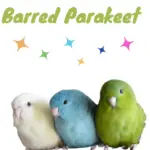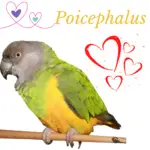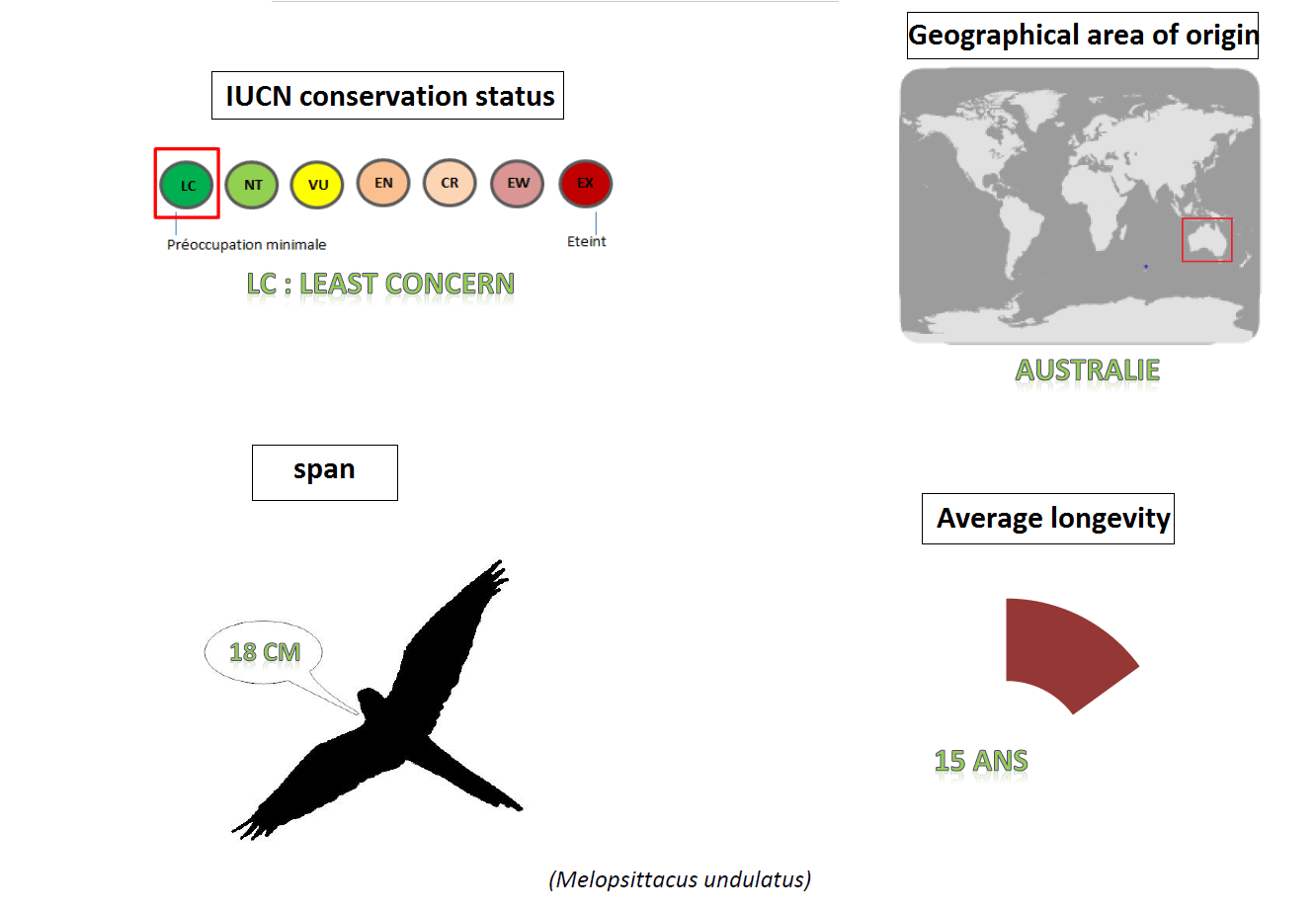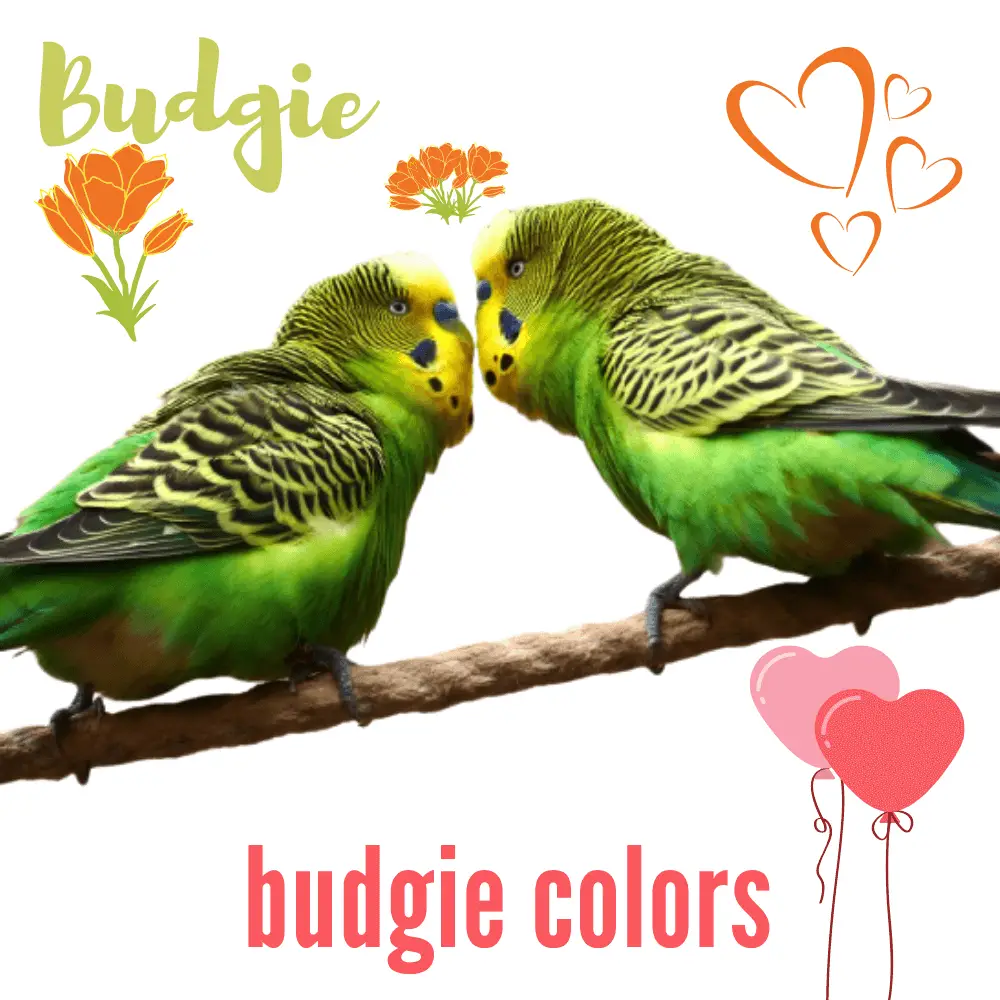
The Budgie(Melopsittacus undulatus) is a species of Australian bird of the family Psittacidae (commonly called Parakeets and Parrots typical) It is the only species of the genus Melopsittacus and the tribe of Melopsittacini. Its name is due to the fact that it has several undulations around its body but some parakeets may have very fine or not at all.
This bird lives in all arid and semi-arid regions of Australia. It adapts perfectly to European climates.
Order: Psittaciformes Famille: Psittacidae
Régime juridique: Not included in the Appendices, free detention not subject to quotas
Sex: No sexual dimorphism
Phenotype:
- The wild phenotype is green with yellow and black stripes on the head, back, and dorsal side of wings and some black feathers in the collar
- the color of the wax makes it possible to differentiate the male (blue to pink) from the female (white to brown)
Character: bird accessible for all beginners, very peaceful and sociable, and living preferably in colonies.
Weight: 20 – 30g
Can budgerigars talk?
Are budgerigar good pets?
Do budgies love their owners?
Budgie behavior
Even if each budgerigar has its own personality, they share certain character traits. So much the better, because it is important to be able to differentiate between normal behavior and abnormal behavior to judge if all is well in your cage or aviary.
Budgie male and female
In general, there is no big behavioral difference between males and females. Both sexes eat, talk and socialize in the same way and can show the same passivity or aggressiveness depending on their mood, personality or circumstances. Females have a louder, louder voice than males, and they also cry more frequently. They are less likely to learn human words, although it is not impossible for female parakeets to speak.
The mating season is a vague and extensive concept because, in captivity, this “season” can happen at any time of the year, the birds of both sexes then become more territorial and aggressive than usual. Females are particularly sensitive to this sudden hormonal surge, so don’t be surprised if your usually peaceful bird suddenly attacks your hand. Fortunately, its beak will not be sharper than usual during these hormonal periods, so there is no risk of hurting yourself. These periods will generally last between three to six weeks.
With the hormones that work it, the bird will also want to mate, but without a willing and/or available partner, its toys, its food or even you may become the target of its sexual attentions. You can discourage this instinctive behavior by putting the bird back in its cage if it uses you to vent its frustrations. Removing mirrors and spaces that could serve as potential nests can also help curb their heat.
A parakeet that is too hot will raise its wings slightly from its perch. The feathers around the wax (the nose area) can also be curled. If it is very hot, it will open the beak and gasp. Always make sure the cage has a shade corner where the parakeet can cool off a bit.
A frozen bird will sit on its perch, huddled, with the ruffled feathers. Move it to a warmer location, or, if the bird is outside, offer it a warm refuge or turn on the aviary heater.
Difference between male and female budgie
SOURCE:Budgie World
Parakeet stretching its wings
Like all animals, parakeets need to stretch after an extended period of inactivity. This is the perfect time to admire the beautiful plumage of their wings, as they will stretch their leg and wing to one side before switching to the other.
The parakeet will spread its wings wide to finish and to allow blood to circulate in its muscles. The stretch is done in silence, not to be confused with the aggressive deployment of the wings (which is often accompanied by screams) and which is often observed in the stampede around the food bowls.
Budgie colors
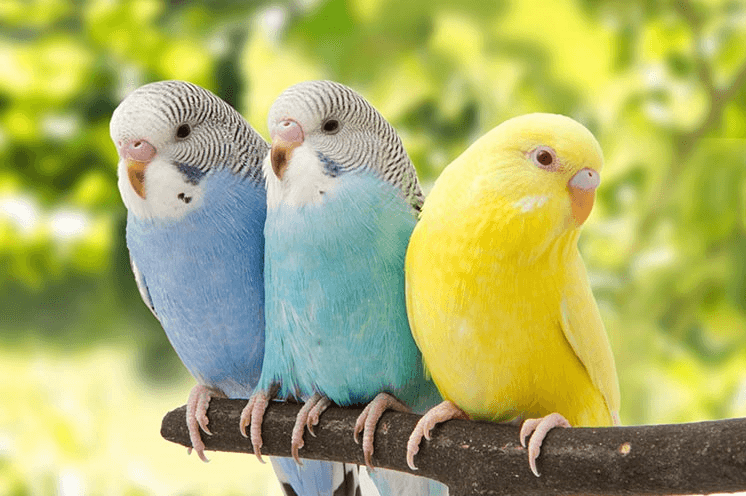
There are only one species of the budgerigar, and the different names we give it, such as “English”, “American” or “Australian” are only a detail because all include the Melopsittacus undulates. However, three main groups can be distinguished.
“Australian” refers to birds confined to Australia (following the export ban in 1894). They generally look a lot like their wild ancestors. The “American” parakeets (or pet parrots, as they are called in the United States) are a little larger than the Australian ones, but still generally resemble their wild parents. The “English” parakeets are visibly larger, and their plumage varies more in size and thickness. Despite this designation, these American and English birds are found all over the world.
A single species-rich in varieties
These three large groups of parakeets come in several variations of different colors but do not form separate species. There has been no crossing with other similar species in order to produce new and degraded forms.
In addition, the genetic background is quite limited, generating only variations in size and plumage (unlike hens, for example, for which there are several genetically distinct breeds, even if they all descend to the base of the golden rooster Gallus gallus ).
So, whether your parakeet is of a larger than average type, or whether it has a tuft of feathers on its head or an entirely yellow plumage, it will undoubtedly be a parakeet, by its shape, its gestures, its voice, and behavior.
Budgies sounds

Sound is one of the defining characteristics of parakeets. They make soft chirping music and provide an almost constant background noise of gossip that provides great pleasure to their breeders.
Parakeets are real imitators, and they will add all kinds of sounds to their repertoire. The parrot family, including the parakeets, cannot sound like a tape recorder, in the manner, quite annoying, of the minnows or “lyrebirds”. They have everything of a parrot that has character, a sound that is unique to them and befits their personality.
With human conversations in the background, accompanied by other audiovisual devices in your home, you will encourage your parakeet to speak. The parakeet will naturally take a liking to the sound of voices if they have always been part of its environment. Sometimes his efforts will not sound like human words, because sounds do, but hopefully, you will hear him say something intelligible. And even if she has no idea what she’s saying, her first “Hi Coco” (or whatever phrase you taught her) will fill you with joy and pride!
Budgerigar Sounds to Play for Your Parakeets
SOURCE:Discover PARROTS
Budgerigar talking
If your parakeet coexists with other birds (which is preferable), it will be difficult to interrupt their bird chatter to teach it human words. Even a mirror can be a distraction that will prevent him from drinking each of your words.
It is true that birds alone have better chances of hearing exactly what you say to them, but unless they are constantly present to serve them. as a companion, they will end up feeling lonely and wanting the company of other parakeets. This gregarious instinct is written in their genes. To choose, a happy parakeet is better than a talking parakeet.
You will be more likely to teach a male parakeet to speak, and young parakeets (over four months of age) will learn more easily.
This does not necessarily guarantee success, so do not be discouraged if your bird does not succeed. Some are made for human sounds, others are not.
For each Disco and Puck (parrots with bluffing abilities which are the stars of social networks), or each less impressive but just as talkative parakeet, there are many birds that have not said a single word, despite the hours of training and attention received.
Meet Disco the incredible talking budgie
SOURCE:BBC
Train parakeets to talk

Imitators need to be exposed to the sounds they are going to imitate. So, a parakeet needs to be immersed in human conversation if you ever want her to speak. She’ll be more inclined to learn if you’ve tamed and trained her on your finger. She will end up being comfortable in your presence, and will consider your voice as a reassuring element of her musical environment.
Some parakeets prefer higher-pitched voices, those of women and children, rather than lower-pitched male voices. If you are male and the only person available for the bird, you have no other choice, but you can still try to use your higher notes as much as possible!
To maximize your chances of having a talking parakeet, you can meet the following conditions.
- Before you start to teach him, your bird should have taken his marks and no longer be afraid of you or his environment. Enjoy a time when the parakeet is in the mood to listen, sitting on its perch, feathers slightly puffed up, and chirping for its own ears.
- Morning is the best time to teach her a lesson, or evenings, once she’s calm after a busy day.
- Repeat the words you want to teach him several times, bringing your face closer to the cage. The parakeet will watch you very carefully. Her pupils may dilate when you speak, which is a good sign: it shows that she is excited by the sound.
- Choose a versatile word or phrase, such as the name of the bird. You can then vary the classic “Hi Coco” with phrases that incorporate it, such as “Bravo, Coco! “,” Are you okay, Coco? ” And so on.
- Limit these sentence learning sessions to 10 or 15 minutes. One in the morning and one in the evening is sufficient, but remember to say the basic word or phrase at other times, mixing it in with the general background noise of the room.
- During lessons, limit others are in the room (turn off the TV or radio, for example).
- Don’t limit yourself to the words you teach him, have a real conversation, but always go back to the central sentence.
- Make it lively: repeat the words with conviction, rather than a monotonous tone. Parakeets are more receptive to animated voices than to robotic accents. Don’t whisper, or they’ll never assimilate the words, and don’t yell, or you risk scaring her
- Talk to your budgie constantly: say hello in the morning and good evening before going to bed, and do not hesitate to say hello several times a day. Say things like “Where’s your lunch box?” When she goes to fill it up, or “That’s good, well done” when she hoists herself on your finger. Always strike up a conversation with her. She will eventually associate these varied sounds with activities and times of the day.
- Respond to your parakeet’s body language with words, calm her down if she looks distressed, speak in a soft voice when she is relaxed and squeaks with her beak.
- As soon as a familiar sound appears in your bird’s conversation, respond to it by repeating it.
- When he has mastered his first sentence, focus on the next one. Building a directory for it will take time, you have to be patient.
- Reward her with her favorite treat the first few times she says the new word or phrase. This is the oldest trick on animals, but a trick that works.
- Never show any signs of impatience or frustration, either through gestures or words: you can quickly go from being a funny companion to a frightening monster in the eyes of your parakeet!
Budgie diet
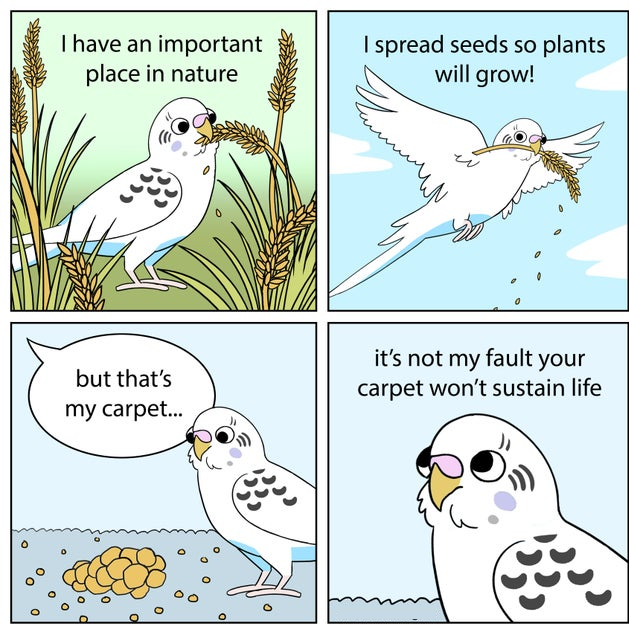
If you give your parakeet the nutritional equivalent of what it can find in the wild, you will maximize its chances of being happy and healthy. A mixture of high-quality seeds should make up the bulk of his diet, along with sprouted seeds, fresh fruits and vegetables, a cuttlefish bone and a mineral block.
Like children in fast food, parakeets will often choose the least healthy option if left to do so. If you only offer dry seeds and nothing else during the first weeks of a parakeet’s life, it may end up disregarding the other options you offer.
You may think that there is nothing more delicious for her than succulent fresh fruits and vegetables, but for her palate, nothing is tastier than dry seeds.
If it is the only food given to the bird, it can end up overweight, especially if these seeds include (and this is often the case) a large dose of millet (wheat) and other milky seeds.
Throughout its life, a parakeet must receive a varied and nutritious diet even during the breeding period. You should, however, provide extra protein, such as egg-based foods.
Budgie parakeet

Budgerigar food in nature
In the wild in their native Australia, parakeets eat seeds, mainly various grasses. They love seeds in all their forms: dry and ready to fall, freshly germinated, or even those that are starting to take root and become tiny plants. Parakeets also like leaves, especially eucalyptus ones in which they like to nest. They also appreciate the fruits, when they find them, and put themselves at the back of the farmers by plundering their fields of wheat, barley or other cereals which they like to put under their beaks!
Give your pet birds this varied range. Fortified mixtures and supplements help to fill nutritional gaps, but nothing is as good as a complete “natural” diet that meets all the needs of a healthy bird. A poor diet is often the cause of early death in parakeets, which can seem staggering for an owner scrupulously offering a mixture of seeds that claims to meet the nutritional needs of the bird. The balance is right on the label because in practice older seeds lose their nutrients. This means that a bird that has a full crop on a regular basis may still be malnourished. The problem is the same if you give too many nutritionally poor “treats” like bread, pasta or rice.
Maintaining a varied diet is the key to good health
So be sure to bring variety, and keep an eye on what your parakeet eats. Did she eat all the millet but did not touch the vegetables? If this is the case, reduce the portion of seeds to a minimum for a few days, this will force your bird to try other foods offered to it.
How to Feed Budgies | Choosing the Right Foods
Water for Budgerigar
The water of the parakeets must be changed every day, even if the bowl or the waterer is protected from droppings or splashes. The hyperactive behavior of these birds inevitably causes jets of dust, seed shells or feathers that end up in the water. Parakeets sometimes use their drinker and bowl of water like a bathtub. Make sure that the water you give to your birds is suitable: if tap water is suitable for human consumption, it is also suitable for parakeets.
How to give Budgie’s First Bath | Budgie Water Training
SOURCE:Alen AxP
A drinker attached to the cage minimizes splashing
No need to fortify your birds’ water with vitamin or mineral supplements: their diet already provides them with what they need. If you need to add medication to the water as directed by the veterinarian, clean the bowls and waterers well daily.
Budgie cage
The 5 Top-Rated Parrot Cages
| EDITOR’S PICKS | BRAND | RATING |
|---|---|---|
| Best Overall | Prevue Pet Products Wrought Iron Select Bird Cage
|
4.5 |
| Runner Up | Homey Pet – 65″ House Shape Bird Cockatoo Macaw Cage | 4.4 |
| Best Budget Buy | Super Deal 68″ Large Bird Cage | 4.0 |
| Best Large Cage | Mcage Large Double Flight Bird Wrought Iron Double Cage | 4.0 |
| Best Aviary | Bestmart INC LARGE Aluminum Bird Cage Walk In Aviary | 4.2 |
Budgie cage size
The standard minimum cage size recommended by bird professionals is 12- by 18- by 18-inches for a single bird
The 10 Best Parrot Cages
Budgie in cage
For the well-being of your parakeet
Here are the basics to keep your birds happy (you will find more detailed information on this in the following chapters):
- A suitable size cage, well furnished and regularly cleaned, which you will place in a sufficiently heated room (or in an aviary containing a sheltered area for nest boxes)
- A healthy, balanced and varied diet
- Drinking and fresh water, for consumption and for washing
- Toys and other accessories to stimulate them and improve the comfort of their cage
- A calm and relaxed environment (no predatory cats, no night lights, no young children playing with the cage …)
- Company – other parakeets or just you (and a mirror for times when you are not available for your bird)
- Enough space for them to fly
Cleaning a Budgerigar nest box
Before the female parakeet settles, the nest box must be cleaned with a solution made of one volume of white vinegar diluted in two volumes of water.
Budgie Bird Toys
Like humans, parakeets love their toys. There are a plethora of swings, bells, balls and other homemade toys that will give your bird hours of fun to stay happy and in good shape! A parakeet without toys may be sad because it will lack intellectual and physical stimulation.
Budgie cage toys
Parakeets love to climb, jump, swing, twirl, and also “test” their environment with their beak and legs. They will have fun chewing anything they find for hours, as long as it is not toxic. It can be a seed distributor, an accessory for the cage, a ping-pong ball … In short, what comes to hand.
Always keep two or three toys in the cage, in addition to permanent accessories such as a swing or bell. Change the toys every other day. Resist the temptation to give all the toys at the same time, the cage will end up too crowded. Be careful to leave enough space for the bird to fly. This is particularly important if your cage is rather small, and the available flight space is already limited.
Parakeets playing with their toys
Your parakeet will carefully examine any object you place in the cage, feeling its beak in every nook and cranny and nibbling its ends. Some are admittedly more timid than others, and a less courageous bird can wait several hours, sometimes days, before venturing near a new toy. Once the object has been inspected in fine detail and the bird has played with it for a day or two, it will begin to lose interest. It is therefore important to replace old toys with new ones, on a frequent basis.
Breeding budgies
Most parakeet owners stop just before they become bird breeders. There are, however, many enthusiasts who enjoy participating in the growth of this global population of budgerigars.
With adequate space and equipment, breeding parakeets is quite simple. As long as you offer them the best possible conditions, you can generally count on the birds to do the rest without you having to intervene.
Parakeets tend to pair up in aviaries. Nevertheless, some breeders (and especially those who reproduce them for shows and exhibitions), are looking for the magic formula which allows combining two birds whose genetic inheritance produces the perfect show individually.
In a mixed group, this means intervening to couple two parakeets of the opaline type, or two crested parakeets, etc. If you want a lot of color and variety, you can give free rein to their natural affinities to unite as they see fit.
If your pair of selected parakeets cannot bond, it may be a sign that you need to review your Cupid skills! Give them a day or two before intervening: it is not uncommon for a couple to be on the defensive or even the offensive first if they find themselves together for the first time because of a hopeful breeder.
Budgerigar care
Do not get into the business of budgerigars if you have little enthusiasm for the idea. While taking care of a budgerigar is fairly easy, that doesn’t mean you can just take it home and forget it in a corner. Every day, the bird will need to be fed and given a lot of attention and you will also need to clean its cage regularly.
Budgerigar breeding cages
If you keep a lot of parakeets, you will need to provide them with a more intimate space for breeding. This can take the form of compartments in an aviary, for example, or you can install the couple in a breeding cage.
This must measure at least 60 x 40 x 40 cm. You will need to equip it with the usual cage accessories: at least 2 perches, a mineral block, a cuttlefish bone, a constant supply of seeds and fresh food as well as water, and a nest box. The cage must also have two doors: one to access it (for your hand) and the other to be able to allow passage to and from the nest box. If your birds breed in a special cage, you will need to attach the nest box outside.
Taming a Budgerigar
The taming of a budgerigar mainly consists of gaining its confidence. The parakeet is much smaller than you, and it is, therefore, natural that it feels intimidating. It will take time to reassure a parakeet that the giant monster behind the cage is not mean but, on the contrary, a friend and playmate.
Sudden movements, thuds, and objects banging against the cage will scare your budgie, as playful and outgoing as it may seem. Putting a hand in the cage will scare him too, so it’s better to take your time.
Gaining the budgie’s trust is essential
The following tips apply especially to small cages that can hold up to four birds. Taming larger groups, like in an aviary, for example, is a different and easier situation because you don’t have to deal with birds individually. Unless a new aviary is formed, some birds will already be used to your presence. Only newcomers will have to learn by observing and realizing that you don’t want them any harm. Linger a bit and they will start using you as a perch.
If it’s a new aviary, staying with the parakeets for a long time is even more important. It is not necessarily a matter of standing in the cage, but of spending several hours each day near the bars, talking and moving around the cage so that the parakeets can observe you and, ultimately, ignore you. Also, make sure that other family members and pets show up.
How to Gain Your Birds Trust
SOURCE:Alen AxP
Budgie adoption
Taming and training individual birds takes time and effort. If you want to quickly tame a parakeet, you will need to dedicate several daily training sessions to it. In this way, you can have tamed it with your hand in one or two weeks. The more time you spend, the less time it will take you to earn your trust.
This relationship of trust is the key and the first step, whether you want to teach them to speak, to perch on your shoulder, to do a few tricks or just to have a happy birdcage with you.
Budgie health
In the wild, budgerigars breed in spring and winter. This means that in Northern Europe they are willing to do this most of the year.
They need long days to stimulate their reproductive instincts. In the UK, breeders often mate their birds in November to have new birds banded in the New Year. This annual bird banding is calculated to fall on January 1: this allows to have new young parakeets for the exhibitions of spring.
Artificial lighting can stimulate birds to mate. During this period, they indeed need 12 hours of daylight. The rays of the sun breaking through the windows (if the birds are inside) are not enough to provide them with the necessary amounts of vitamin D (the sun’s rays being essential for the metabolism of this vitamin). You will find suitable fluorescent lights at animal shops: ask advice from other breeders regarding the availability in trade and the configurations required in the cage and aviary.
Reproductive age in budgerigars
Budgerigars are physically able to breed from the age of six months, but it is best to wait at least 10 months. A younger bird will generally fail to be a parent. No rush: once they are mature enough, female parakeets can reproduce for four years, and males for six years.
A brand new mother sometimes lays her eggs outside the nest boxes. It’s okay as long as you put the eggs back in the box, to show her that’s the way she should be. Once it is properly installed on an egg in its special cozy corner, it will no longer make this error.
Budgie eggs
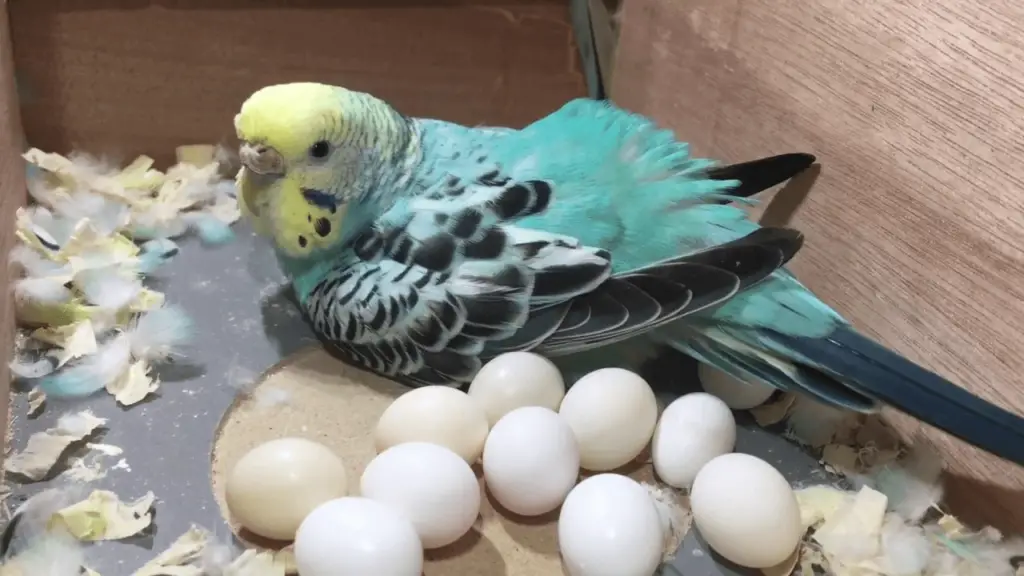
Reproduction box and a nesting box for Budgerigar
Parakeets need holes and cavities where they can reproduce and nest: something that simulates the holes in trees that they favor in nature. Wooden nest boxes are a good substitute. The parakeets’ nests are very minimalist: a simple dry soil to lay their eggs, covered with soft nest material (untreated wood shavings or crushed paper, for example).
The floor of the nest box should contain a concave section, to help the parakeets to grip. This will also prevent the development of the condition called leg divergence (legs apart), which sometimes happens when the parakeet spends time standing on a hard, level surface. (See the previous section on the parakeet with legs apart).
Install the birdhouses in your aviary, or attach one to the outside of the cage, depending on the situation. The female (and later the parakeets) must be able to access the cage through the open door (which you will have removed).
Budgerigars – Earthflight
SOURCE:FloTinaway
Budgie lifespan
I think the average is something like 8 years, mostly due to poor husbandry (people think it is a “cheap” pet so don’t research how to care for them, or take them to the vet, etc), and because birds are fragile pets compared to dogs or cats.
A budgie’s life
But with good care and good luck, 15-20 years is totally doable!
budgie body language
Males love to nod, which makes for an equally entertaining sight. The rapid up-and-up motion of the bird’s neck is often accompanied by chirping. If your male parakeet has a female parakeet as a partner, he will behave in order to impress him; this is indeed part of his “flirting” techniques. If you let things take their course, a nodding session can turn into a loving moment.
Pet parakeets are happy to nod their heads on other occasions, however. An outgoing bird (and all Budgerigars have different personalities) will tend to nod more often than a more reserved bird.
Females occasionally contract “nodding fever” but often follow the males’ initiative. They will nod their heads in front of another male, you, a mirror, their favorite toy, or even a particular food or section of the cage.
The nodding of the head sometimes becomes part of a ritual song or dance. This usually indicates that the parakeet is happy and excited.
Nodding is part of a parakeet’s body language
If you show that you appreciate this behavior in a tame bird, it will make a habit of using the nod to get your attention. You never know what’s going on in a parakeet’s head, but a nod of the head is proof of well-being.
Parakeet chicks often nod their heads to show that they are hungry. Once weaned, when they are old enough to roost with adult birds, young parakeets will often continue to use this “nod to eat” technique with their parents.
Accompanied by chirps, it means “I’m hungry! Action often leads to the desired result, but even the most attentive parent in the world will eventually lose interest, and the chicks will have to do like all other birds and fight for their share of food.
Parakeet exercise
As soon as they wake up, parakeets flap their wings violently to roost. Sometimes they leave their perch and soar vigorously, to wake up the muscles in their wings, sending a cloud of empty seed envelopes and feathers at the same time. It has nothing to do with aggression or parry, they just need to stretch their wings after a while of inactivity. Calls and chirps will often accompany this energetic wingbeat.
Note: Parakeets need to exercise their wings even more, and if you do not keep them in an aviary with room to fly, you will need to let them roam free out of their cage, in a room where they can fly.
Parakeets also love to do gymnastics – climbing the sides and roof of their cage or hanging from their toys hanging like feathered squirrels.
Budgie Kigurumi Onesie Costume
- Material: Fleece (100% polyester).
- Imported
- Official SAZAC Kigurumi: Don’t fall for copycat imitations! SAZAC is Japan’s most successful Kigurumi manufacturer, unmatched in both quality and design. Our onesies feature symmetrical faces, professional stitching, thicker fabric and rich, vibrant colors.
- Ultimate Loungewear: Thanks to their relaxed fit, slipping on a Kigurumi is like diving into a pajama paradise! Enjoy a midday nap, binge-watch movies or just lounge in style, because once you throw on the warm, cozy hood, you’re all set to enjoy some me-time.
- Stress-Free Costume: Whether it’s Halloween or you’re headed for the club dressed in your best, our Kigurumi onesies double as no-hassle costumes! With a quick and easy button-up design, you can wear it over normal, boring clothes for versatile convenience.
- Premium Materials: Made with a luxurious polyester fleece fabric, each Kigurumi is as warm as it is durable! All of our products are of the highest quality and have been tested to meet U.S. safety standards, ensuring you can wear and enjoy yours for years to come.
- Washing Machine-Safe: Is your Kigurumi covered in chip crumbs after a three-day TV marathon? We’re not here to judge, we’re here to help! Just pop your onesie into the washer on cold for a quick clean. If you put it in the dryer, use Air Dry to keep it fluffy.
Budgie memes
Budgies price
Budgies price (Parakeets): $10 to $35
Budgie vs parakeet
The term “parakeet” is used for many species of psittacines or parrots. In general, the addition of “keet” is used for parrots with long, slender tails; as opposed to the more squared-off, shorter tails of Amazons, African Greys, Cockatoos, Eclectus, Senegals, some Conures, and others. Also, another way to remember the difference between cockatoos and cockatiels is that the “tiel” is the smaller, usually grey/white bird with orange cheeks patches.
If you’re interested in other differences among psittacines, Psittaciformes, or psittaculae-type birds, you should refer to a good reference book such as Parrots of the World by Joseph M. Forshaw. It’s an excellent reference, has hundreds of example drawings and descriptions of even the small differences in color of males vs. females, and even subtle differences among subspecies of certain species of birds; as well as the food is most often eaten in the wild by difference species.
Budgie mutations

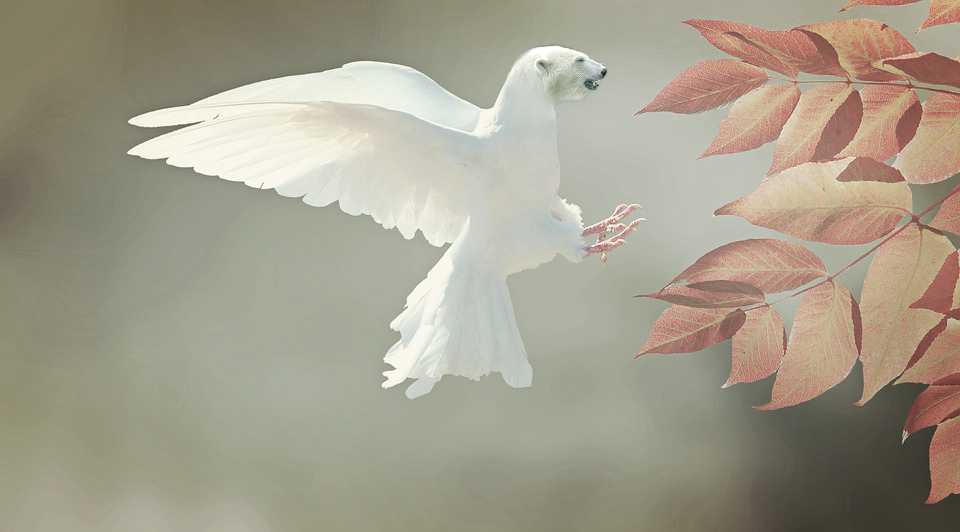
Yes, Budgies are great pets, is the most popular pet bird, If youre looking for a low-cost, friendly, easy-to-keep pet, budgies make great pets for people with limited space

